US Slams Reports Of Sexual Abuse Of Jailed Protesters in Iran
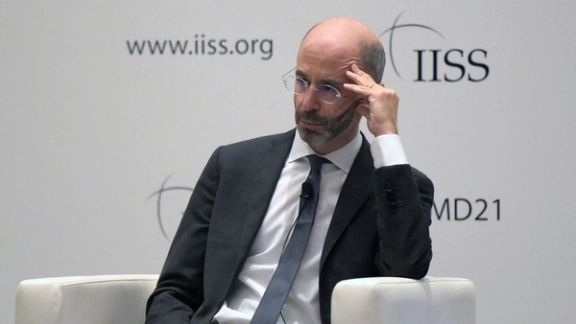
The United States’ top diplomat for Iran has slammed the Islamic Republic for reports about sexual assaults on protest detainees, saying it is “unspeakable”.

The United States’ top diplomat for Iran has slammed the Islamic Republic for reports about sexual assaults on protest detainees, saying it is “unspeakable”.
Robert Malley, the US special envoy for Iran, said in a tweet Tuesday that a report by CNN describes “unspeakable acts of sexual violence by Iranian officials in detention centers. It’s a reminder of what is at stake for the Iranian people - and of the lengths to which the regime will go in its futile attempt to silence dissent.”
In an investigation published by CNN on Monday, covert testimony revealed sexual violence against protesters, including boys, in Iran’s detention centers since the start of the unrest.
In some of the cases CNN uncovered, the sexual assault was filmed and used to blackmail protesters into silence, according to sources who spoke to the victims.
In reaction to this report, State Department spokesperson Ned Price also harshly criticized the Iranian regime, saying that Washington continues to hold the perpetrators accountable.
Price said Tuesday that the US “is disgusted by the reports and eye-witness accounts of protestors, including minors, being sexually assaulted while in the custody of law enforcement.”
“Iranian authorities' use of sexual violence as a tool for protest suppression brings into stark contrast the bravery of Iran's protestors in the face of such reprehensible measures to intimidate them and end the protests,” added Price.
Condemning the brutality of the clerical regime, Price added that it appears no act is beneath the Islamic Republic's leadership in their attempts to silence dissent.

About a week into the Islamic Republic’s military attacks on Kurdish regions in Iran and Iraq, the international community seems to have taken a stronger stance against the Tehran.
Tuesday was another tension-filled day for residents of Kurdish-majority cities in western Iran while people in many other cities, including capital Tehran and its neighboring cities as well as others in the southwestern Khuzestan province and southeastern Sistan-Baluchestan province also held gatherings in support of their fellow Kurdish countrymen.
In addition to Kurdish cities, people in the city of Shahr-e-Rey in Tehran province, Dezful and Andimeshk in Khuzestan, Zahedan in Sistan-Baluchestan, and Mehr County in Fars province as well as in several neighborhoods in Tehran held rallies, set fire to trash cans and chanted slogans against the regime’s clampdown.
While the Islamic Republic has cut people's access to the Internet in Kurdish-majority cities and also disrupted to access in Tehran, videos are slow to surface online but according to reports protests started before noon at university campuses across the country. Workers in several industrial complexes and numerous businesses were also on strike on Tuesday, and by afternoon people started pouring into streets, chanting slogans against the government.
As students continued to hold antigovernment rallies, members of the Iranian parliament presented a proposal to ban the protesting students from traveling abroad for ten years.
While Iran's Revolutionary Guard has intensified attacks on Iraq’s Kurdistan region, the United States and Israel announced that they would hold a joint air exercise next week simulating scenarios against the Islamic Republic and its proxies in the region. The announcement came as Israeli officials warned in the past few days that the unabating protests across Iran may push the Islamic Republic to be more aggressive regionally.
The head of Israel’s military intelligence, Maj. Gen. Aharon Haliva, Monday said, “The extremely exceptional protests… have moved to a civilian rebellion. The death toll, the attacks on national symbols, this is very troubling for the regime, in combination with sanctions,” adding that “as the pressure on Iran increases, including internal pressure, the Iranian response is much more aggressive, so we should expect much more aggressive responses in the region and in the world.”
The global outcry over the crackdown on protests is gaining a new momentum following the European Parliament’s announcement on Monday that it would not keep direct contact with the Islamic Republic authorities.
European Parliament member Charlie Weimers told a special session of EU Parliament on Iran Tuesday that "The Iranian protesters want a divorce from the Islamic Republic, not counselling," calling on EU countries to expel the Tehran’s diplomats, recall EU envoys, shut down Iran’s embassies and proscribe the Revolutionary Guard as a terror organization.
Also on Monday, European Parliament President Roberta Metsola said, “there will be no direct contact between the Parliament and Iranian officials until further notice,” adding that the Islamic Republic must stop its oppression of legitimate protests. In reaction to the death sentences imposed on protesters, Metsola urged Iranian authorities to “stop, here and now”.
White House Press Secretary Karine Jean-Pierre said on Tuesday that Washington is "gravely concerned" about the Islamic Republic's intensifying crackdown on peaceful protestors that has killed at least 400 people so far.
The UN’s Third Committee approved a draft resolution on Iran’s human rights situation last week, expressing concern at the alarmingly high frequency of the death penalty in the country. Moreover, the UN Human Rights Council will also adopt a resolution aimed at holding the Islamic Republic accountable on November 24.
Voicing concerns over the situation in Iran and especially Kurdish cities, the UN Human Rights council said at least 40 people were killed by security forces over the past week. “We urge your authorities to address the people's demands for equality, dignity and rights instead of using unnecessary or disproportionate force to suppress the protests,” said a spokesperson for UN human rights chief at a Geneva press briefing.
UN human rights chief Volker Türk said that "The rising number of deaths from protests in Iran, including those of two children at the weekend, and the hardening of the response by security forces, underline the critical situation in the country."
Also on Tuesday, German MP Norbert Röttgen highlighted that "Since the weekend, the regime has been literally waging war against protesters in the Kurdish regions of Iran. The fact that the German Federal Government has so far been silent on this issue now borders on a political and moral failure on a historic scale."
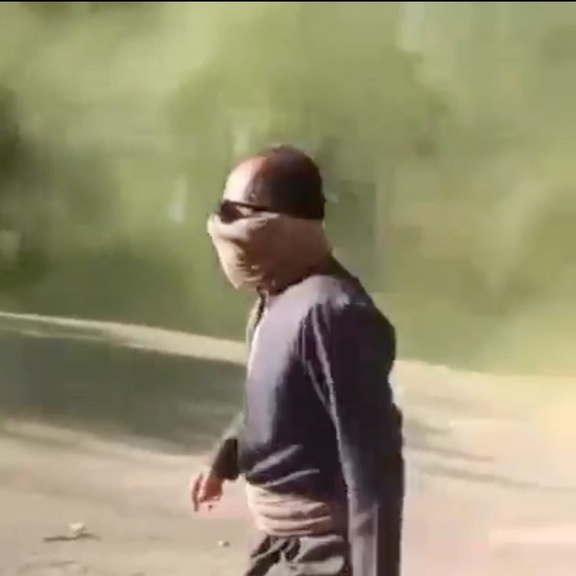
The reported government use of a “green gas” against protesters Kurdish cities of Javanrud and Piranshahr Monday has raised serious concerns among Iranians.
Two videos were posted on social media that showed thick green smoke wafting through the streets in Javanrud, a city of around 50,000 in the western province of Kermanshah, amid heavy clashes between stone-throwing protesters and security forces shooting at them. Reports also emerged on the same day of the use of a similar green gas in Piranshahr in West Azarbaijan Province.
The use of an unidentified gas that causes skin irritation, nausea and other symptoms has conjured up memories of Saddam Hussein’s chemical attack on the Kurdish border city of Sardasht, also in West Azarbaijan during Iran-Iraq War (1980-1988) in the minds of many, particularly people in Iran's Kurdish areas.
Saddam’s chemical attack during which mustard gas was used killed at least 130 people and injured 8,000 of the 12,000 inhabitants of the city in 1983. Many victims still struggle with respiratory and other health issues.
“The occupying regime [of the Islamic Republic] is using banned weapons in Kordestan,” a tweet accompanied with an image of CS gas canisters allegedly found in Piranshahr said. The tweet also said CS gas has been banned by the UN Chemical Weapons Convention (CWC) in 1993.
The canister is marked with the word “irritant” only, but posts shared on social media claim these are perceived as chemical weaponry that has been banned.
Iran's Kurdish cities have been at the forefront of the protests that started with the death is custody of the 22-year-old Mahsa Amini from the Kurdish city of Saqqez two months ago.
People in most Kurdish-populated areas in Kordestan, West Azarbaijan and Kermanshah provinces have relentlessly protested and defied government forces since Masha’s death. Security forces have killed and wounded dozens of protesters and bystanders including children in these provinces.
Some chemists and physicians have identified the green gas used in Javanrud and Piranshahr as hexachloroethane, others say it is adamsite (DM), a chemical used as a riot control agent.
Hexachloroethane has been used by the military in smoke compositions, such as smoke grenades worldwide. DM belongs to the group of chemical warfare agents known as vomiting agents or sneeze gases.
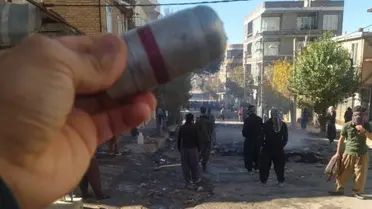
Most western countries have abandoned the use of smoke grenades but some activists have accused police of using it against protesters in Portland, Oregon, in 2020.
US-based physician Dr. Mohammad-Kazem Attari told Iran International Tuesday that hexachloroethane is used widely in military exercises in open air but unlike extremely toxic Sarin, VN and other nerve gases, it does not cause death or permanent disabilities.
According to Dr. Attari hexachloroethane can cause serious skin irritation, partial paralysis of facial muscles and fogginess of mind but temporarily. The chemical is also considered as a carcinogen.
“It is mainly used on the streets [for crowd control] to inspire fear due to its color. It is characterized as a nerve gas but is not as dangerous as nerve gases used in wars,” he said and added that the use of this gas is not likely to scare people who are not afraid of firearms used by Iranian regime forces.
Tear gas itself is banned in war according to UN’s Chemical Weapons Convention (CWC) but its limited use is reportedly permitted for law enforcement purposes.
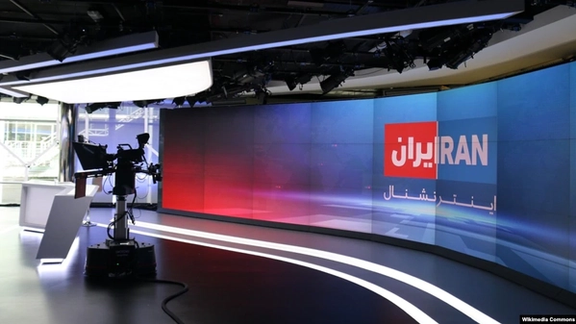
Canada’s Ministry of Foreign Affairs has told Iran International that it condemns threats by the Islamic Republic against journalists inside and outside the country.
Responding to a query, the ministry said journalists and media workers must freely do their job without political interference or intimidation.
“Freedom of expression, online or offline, is a fundamental human right, enshrined in the Universal Declaration of Human Rights. Journalists, activists and media workers are the cornerstone of any fair, strong and vibrant society and must be free to do their work without fear of reprisals. Any violence and intimidation against journalists or activists are completely unacceptable and must be condemned,” reads the statement.
Canada's spy agency has launched an investigation on what it calls multiple “credible” death threats against individuals on its soil by the Islamic Republic.
CBC News said Friday that the Canadian Security Intelligence Service (CSIS) is aware that some state agents of the Islamic Republic are “monitoring and intimidating” people inside Canada to silence those who speak against the regime.
On November 7, Iran International released a statement that its journalists have received “credible threats” from Iran’s Revolutionary Guard. Some employees were informed of the threats by the Metropolitan Police.
After the publication of this statement, international organizations supporting journalists condemned any plots by the Islamic Republic against Iran International on British soil.
UK’s intelligence authorities also announced they have discovered at least 10 “potential threats” since January to “kidnap or even kill British or UK-based individuals perceived as enemies of the regime.”
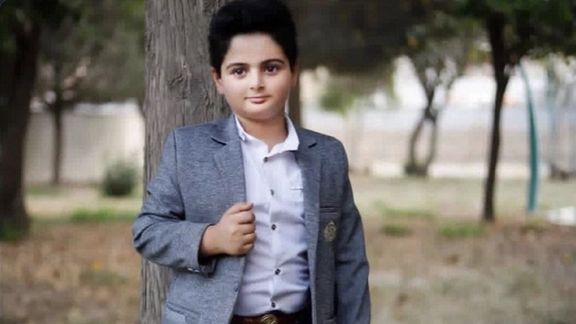
Shocked by the indiscriminate killing of children during ongoing protests in Iran, many are asking the international community to intervene and restrain the regime.
Security forces have killed at least 58 children as young as two in the past two months. Authorities say 54 security forces and regime loyalists were killed in clashes with protesters in the past two months. Many believe government casualties are much lower as in several cases authorities have tried to highjack the victims as their own “martyrs”.
One such victim was ten-year-old Kian Pirfalak who was reportedly shot by plainclothesmen in Izeh in the southwestern province of Khuzestan on November 16. Authorities have blamed “terrorists” for Kian’s death and used his photo in their propaganda posters.
Kian died and his father was seriously injured when the family including Kian’s younger brother came under fire in the family car on their way home on the street.
In a fiery speech at her son’s burial, Kian’s mother said she had no doubt about who had shot her family and implicitly accused Supreme Leader Ali Khamenei of responsibility for her young son’s killing. Authorities have put her under great pressure to retract her accusations.
One of the very first children shot dead by security forces was a two-year-old boy in Zahedan. The boy from a poor family has only been mentioned by his last name, Mirshekar. He was shot in front of his home in a poor neighborhood of Zahedan, capital of southeastern Sistan and Baluchestan Province, on September 30.
The two-year-old boy was one of the 13 children killed during the crackdown which has come to be known as the “Bloody Friday”. A total of 96 people protesting peacefully, and bystanders were shot dead in Zahedan.
Many Iranians on social media are now referring to the Islamic Republic as the “child-killing regime”. They have also created hashtags such as “Child-Killing Khamenei” and “Child-Killing Regime” which are quickly rising in popularity.
Some have highlighted remarks by an extremist regime ideologue, Ali-Akbar Raefipour, who in one of his speeches claimed Israel used child killing as a strategy to break and subdue Palestinians.
“When you are facing popular forces instead of an army you will have to kill people, kill women and children, deliberately. Kill so many that people try to stop those who are fighting [against Israel] and tell them it’s enough, let go,” Raefipour said in the speech.
Probably in reference to such views, and the large number of children killed in such a short time, one per day, many are saying the regime is employing the same tactic and “systematically” targeting children to inspire fear and suppress the protest movement.
Over twenty prominent Iranian rights defenders urged the United Nations to condemn Iran's government for killing, wounding, and arresting children in a letter Sunday a copy of which Iran International has received.
The letter which is addressed to the secretary general of the United Nations and other UN officials, including secretary general and the chair and members of the Committee on the Rights of the Child, United Nations Human Rights Council, and UNICEF.
The signatories of the letter are all prominent lawyers and rights defenders with a strong record of criticizing human rights violations by the Islamic Republic. They have called for adoption of an international mechanism to document human rights violations by the regime and urged UNICEF to use all the tools at its disposal to make the Iran’s government abide by the Convention on the Rights of the Child (CRC) to which it is a state party.
According to the latest report by Iran Human Rights Activists (HRANA) Saturday, security forces shot or beat to death a total of 402 protesters until Friday. The number of those arrested during this time, including children, is over 16,700 HRANA said in its report.
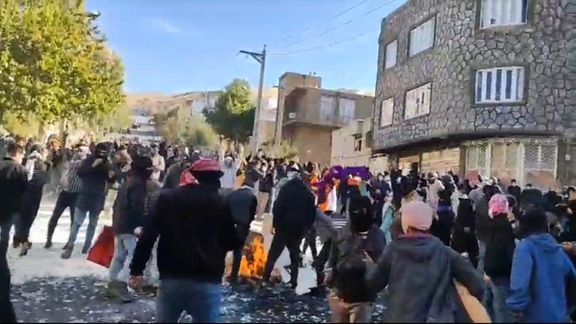
Cyberspace watchdog NetBlocks has confirmed a major disruption to internet service in Iran amid the regime’s intensified attacks on Kurdish cities.
Netblocks that monitors cybersecurity and the governance of the Internet announced in a tweet on Monday that network traffic data show a major disruption to internet service in Iran as mobile internet is cut off for many users.
The incident comes amid a wave of new antigovernment protests and reports of casualties, mainly in the western Kurdish cities.
Several videos shared on social media on Monday showed crowds in the Kurdish-populated city of Javanrud attending to one injured man, and seeking to retrieve the body of a dead protester lying on the street.
Hengaw, a Kurdish Iranian rights group, shared a video of security forces being dispatched to the Kurdish cities of Mahabad and Bukan in dozens of pickups, motorbikes, police cars and one light armored vehicle painted black.
In the past few days, the Islamic Republic has intensified its repression on Kurdish-majority cities and towns in western provinces of the country following reports that parts of some small towns have fallen into the people’s hands. The majority of Iran's 10 million Kurds live in the western parts of the country. It has also launched repeated attacks against Iranian Kurds sheltering in Iraqi Kurdistan.